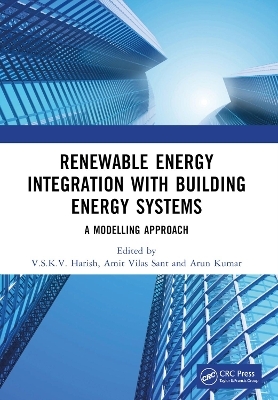
Renewable Energy Integration with Building Energy Systems
A Modelling Approach
Seiten
2024
CRC Press (Verlag)
978-1-032-07798-7 (ISBN)
CRC Press (Verlag)
978-1-032-07798-7 (ISBN)
This book is intended for graduates and professionals working towards the development of sustainable built environment using renewable energy sources.
Construction, as an industry sector, is responsible for around one-third of the total worldwide energy usage and about 20% of greenhouse gas emissions. The rise in the number of buildings and floor space area for residential and commercial purposes has imposed enormous pressure on existing energy sources. Implementations such as efficient usage of building energy systems, design measures, utilization of local energy resources, energy storage, and the use of renewable energy sources to meet electricity demands are currently under development and deployment for improving the energy performance index. However, integrating all such measures and the development of nearly zero-energy and zero-emission buildings is yet to be explored.
In this book, the different control techniques and intelligent technologies used to improve the energy performance of buildings are illustrated. Every building energy control system has a two-fold objective for energy and comfort requirements to achieve a high comfort index (for thermal, visual, air quality, humidity, and various plug loads) and increase the energy performance index. The most significant aspect in the design of a building’s energy control system is modelling. All the components, methodologies, and processes involved in developing a renewable energy-driven building are covered in detail.
This book is intended for graduates and professionals working towards the development of a sustainable built environment using renewable energy sources.
Construction, as an industry sector, is responsible for around one-third of the total worldwide energy usage and about 20% of greenhouse gas emissions. The rise in the number of buildings and floor space area for residential and commercial purposes has imposed enormous pressure on existing energy sources. Implementations such as efficient usage of building energy systems, design measures, utilization of local energy resources, energy storage, and the use of renewable energy sources to meet electricity demands are currently under development and deployment for improving the energy performance index. However, integrating all such measures and the development of nearly zero-energy and zero-emission buildings is yet to be explored.
In this book, the different control techniques and intelligent technologies used to improve the energy performance of buildings are illustrated. Every building energy control system has a two-fold objective for energy and comfort requirements to achieve a high comfort index (for thermal, visual, air quality, humidity, and various plug loads) and increase the energy performance index. The most significant aspect in the design of a building’s energy control system is modelling. All the components, methodologies, and processes involved in developing a renewable energy-driven building are covered in detail.
This book is intended for graduates and professionals working towards the development of a sustainable built environment using renewable energy sources.
1. Fundamentals of Energy Transfer in Buildings. 2. Modelling and Simulation of Building Energy Elements. 3. Modelling and Simulation of Heating Ventilation and Air-Conditioning System. 4. Review of Power Converters. 5. Grid Integration of Renewable Energy Sources for Buildings. 6. Electric Vehicle Technology. 7. Techno-Economic Analysis of Electric Vehicles.
| Erscheinungsdatum | 05.07.2022 |
|---|---|
| Zusatzinfo | 16 Tables, black and white; 102 Line drawings, black and white; 102 Illustrations, black and white |
| Verlagsort | London |
| Sprache | englisch |
| Maße | 174 x 246 mm |
| Gewicht | 270 g |
| Themenwelt | Technik ► Bauwesen |
| Technik ► Elektrotechnik / Energietechnik | |
| Technik ► Umwelttechnik / Biotechnologie | |
| ISBN-10 | 1-032-07798-0 / 1032077980 |
| ISBN-13 | 978-1-032-07798-7 / 9781032077987 |
| Zustand | Neuware |
| Informationen gemäß Produktsicherheitsverordnung (GPSR) | |
| Haben Sie eine Frage zum Produkt? |
Mehr entdecken
aus dem Bereich
aus dem Bereich
Buch | Softcover (2024)
Springer Vieweg (Verlag)
18,99 €
ein Leitfaden zu bahnbezogenen Infrastrukturthemen
Buch | Softcover (2024)
Springer Vieweg (Verlag)
44,99 €
Grundlagen und Vorgehensweisen
Buch | Softcover (2021)
Springer Fachmedien Wiesbaden GmbH (Verlag)
37,99 €


